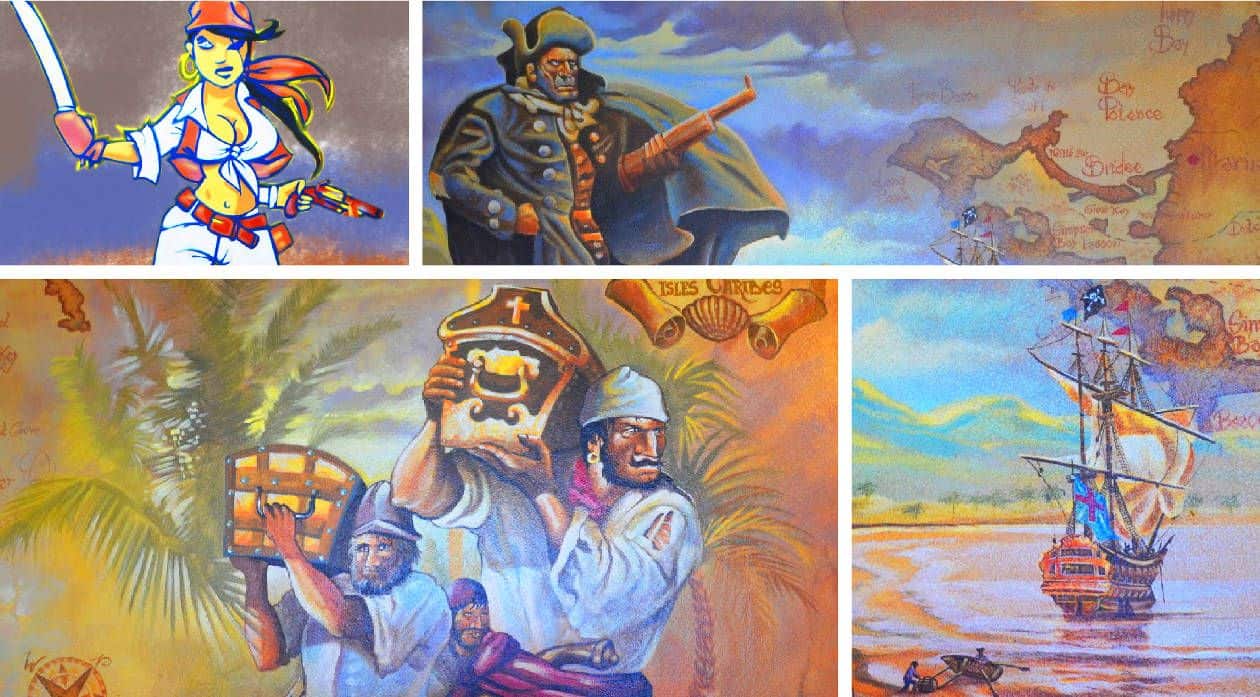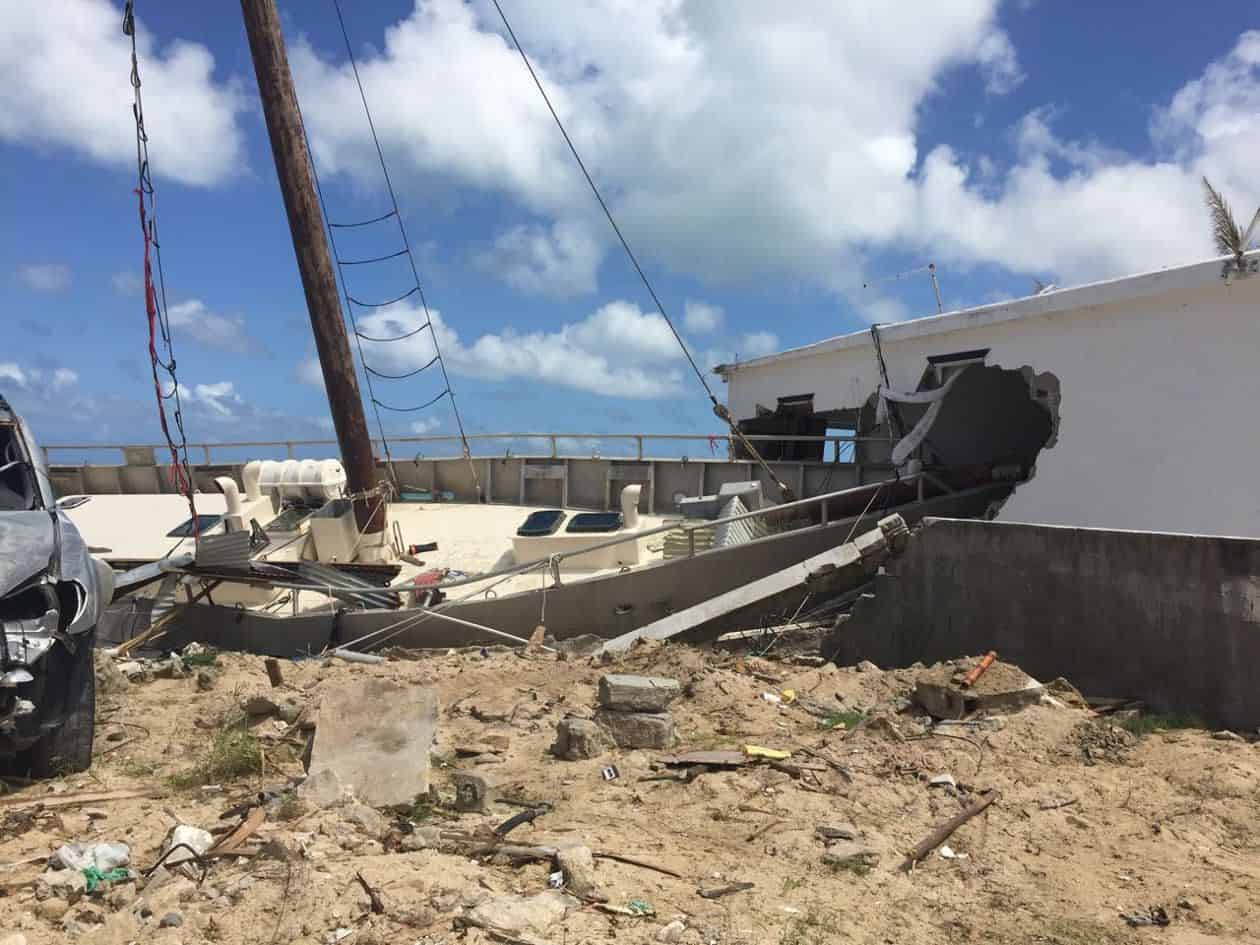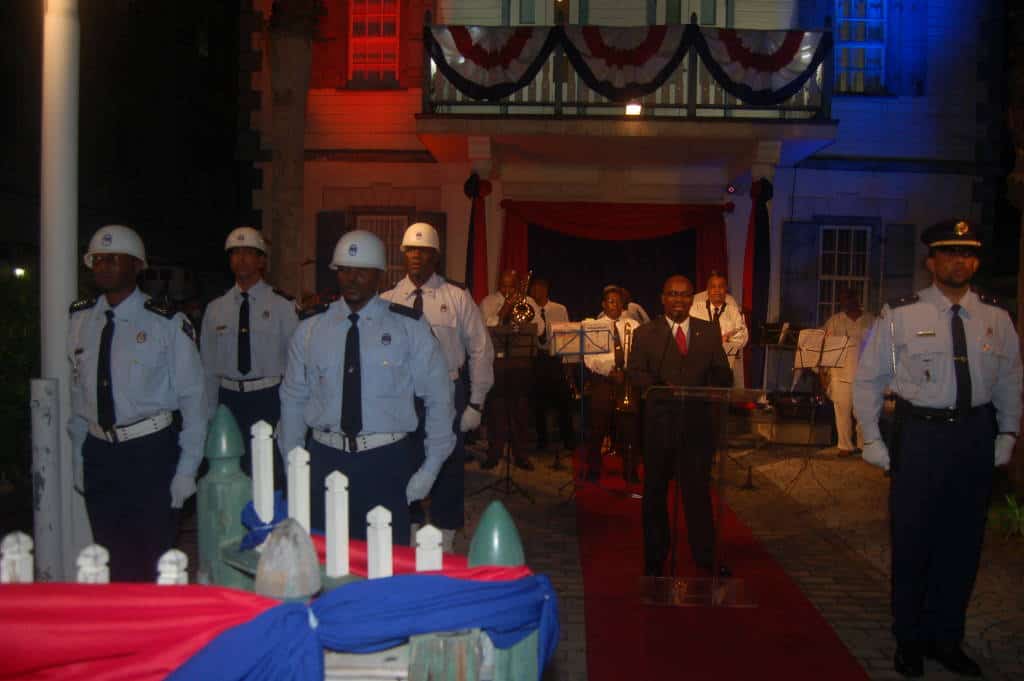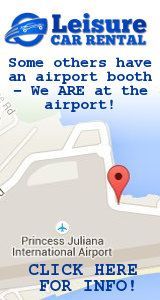Early Settlers
They used salt to preserve meat and the tons of fish they netted in the Baltic Sea. With the break from Spain in the 16th century the Dutch lost access to Portugal's natural salt deposits and were in dire need of a new source. They cast their eyes on St. Martin/St. Maarten with its numerous salt ponds and a new and important trade developed.
At the time that the Dutch finally established a settlement in St. Martin/St. Maarten in 1631, there was already a colony of 14 French families based on the island. In 1633 the Spaniards invaded St. Martin/St. Maarten and the attempts of the French and Dutch to protect their settlements were futile, so they retreated until the Spanish troops left the island in 1648. On March 23rd, 1648, The French and Dutch signed the "Treaty of Concordia" (click for original text). The island has been divided, and the story of how it happened has been embellished throughout history to become the 'Legend of St. Martin/St. Maarten'. Even after the signing of the treaty, however, the island changed hand 16 times, with even English powers vying for control. In 1817 the partition treaty was eventually enforced, giving the French 21 square miles and the Dutch 16 square miles and giving shape to the island as we know it today.

Slave Trade
The slave trade first made its mark on St. Martin/St. Maarten in 1648 with the development of sugar plantations, and was to last 220 years until its abolition in 1848. With the abolition of slavery, the plantations on St. Martin/St. Maarten dried out, leaving virtually no sugar industry. The island was now wholly dependent on its salt treasure. The 'white gold' was produced in great quantities, and St. Martin/St. Maarten became a king in the world of salt production. In 1850 more than 330,000 barrels were produced and a third of the island's population was employed in the industry. After the 1920s the salt industry endured a period of stagnation and decline until in 1949 the salt ponds eventually breathed their last.
Nazi Submarines
With the closing down of the plantations and the slowing down of the salt production, many unemployed migrated to other islands in hope of a better life. In 1914 there were still 3000 living souls on St. Martin/St. Maarten, but by the 1940s the population was down to 2000. The imposed isolation by the two world wars also helped along the decline. World War II had the greatest effect on St. Martin. During this war, German submarines threatened the entire Caribbean. The US Army tried to eliminate these U-boats from the air and was forced to build many air runways on numerous islands, which is how St. Martin/St. Maarten's Princess Juliana airport began its life in 1943. With the airport, a gateway was opened to the rest of the world and the new industry of tourism nestled on the island.
Tourism
The duty-free status, a result of the import and export taxes being rescinded in 1939, and the many unspoiled white sandy beaches, made St. Martin/St. Maarten a popular travel destination. The influx of people and money changed the island completely. Not only did St. Martin/St. Maarten go through huge economic growth; in 1965 the population jumped to more than 4000 inhabitants. In five years the population had doubled and by the mid-80's 40,000 people were living on the island.
The laid-back island attitude of old has now made place for a patchwork of more than 100 hotels and guest-houses and innumerable luxury villa's and apartments. The island welcomes almost 900 000 cruise ship visitors and more than 570,000 plane arrivals a year. In less than a decade the little pearl of the Caribbean has become one of the most affluent in the region.
Recent Events
We can not go through St. Martin/St. Maarten's history without mentioning the most significant recent events that left a deep impact on the island. In 1995 the powerful and destructive Hurricane Luis struck the islands and caused huge devastation. It took four years for the island to recover, but in 1999 Hurricane Lenny was destined to pass over the island to wreak more havoc. Despite serious damage inflicted by rain and flood, the people of St. Martin/St. Maarten know how laughter can heal the soul, and that is one of the reasons visitors keep coming to the island, the prime tropical escape of the Caribbean. It took Hurricane Irma in September 2017 to knock the island down one more time, with 90% of buildings damaged or totally destroyed. And yet... here we are again, ready to offer a great Caribbean vacation experience.
Photo below: a typical image of destruction after Hurricane Irma in 2017

On October 10th, 2010, the Southern part of the island became an independent country. Sint Maarten still is a member of the Kingdom of the Netherlands, with King Willem-Alexander being the head of State. But the previous patch work nation of the Netherlands Antilles has ceased to exist as a nation, and the Dutch side is not governed by Curaçao anymore. With a surface territory of only 17 square miles and about 9,000 voters, St. Maarten is one of the smallest countries in the world.
Photo below: Sint Maarten independence celebration on 10 10 10

As you can see, there is much to learn and explore about this tiny spot in the Caribbean Sea. Welcome to St. Martin/St. Maarten, The Friendly Island!






